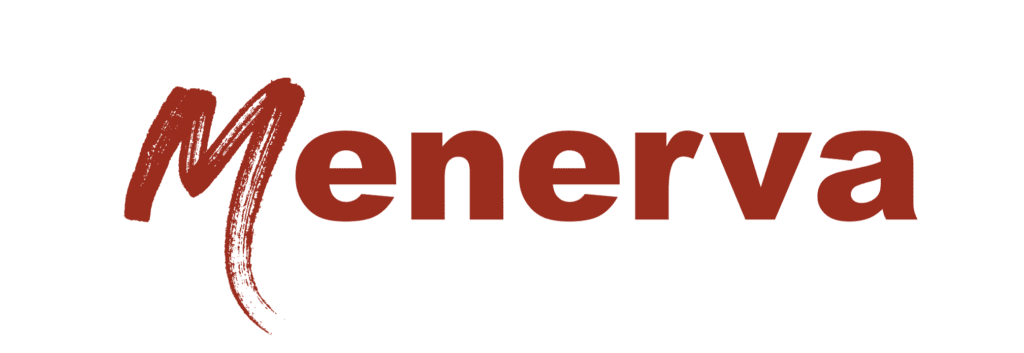Welcome to the world of Tech SEO! Whether you’re a seasoned SEO expert or just starting, understanding the technical side of SEO is crucial for your website’s success. In this blog post, we’ll dive deep into what Tech SEO is, why it matters, and how you can optimize your site to climb those search engine rankings. Ready? Let’s get started!
Definition of Tech SEO
Tech SEO, short for Technical SEO, refers to optimizing a website’s infrastructure to improve its visibility and ranking on search engines like Google. While traditional SEO focuses on content and keywords, Tech SEO optimizes elements like site speed, mobile-friendliness, crawlability, and indexability. It’s about ensuring search engines can easily access, crawl, interpret, and index your website.
Why is Tech SEO Important?
Imagine your website as a store. You might have the best products (content) inside, but if your store is in a dark alley (poor site structure) or has a broken door (slow load times), customers (search engines) will have a hard time finding and entering it. Tech SEO ensures that your website is easily accessible, fast, and user-friendly—critical factors for search engine algorithms.
Key Elements of Tech SEO
Website Speed and Performance
-
- Why It Matters: We’ve all experienced the frustration of slow website speeds, so we know how speed directly impacts user experience. Search engines also treat it as a critical factor for ranking. Fast-loading sites keep visitors engaged and reduce bounce rates, meaning people are more likely to stay on your site and explore your content.
- How to Improve: Optimize images by compressing them without sacrificing quality, leverage browser caching to store parts of your website locally on user devices, use a content delivery network (CDN) to distribute content more efficiently, and minify CSS, JavaScript, and HTML to reduce load times.
- Example: Imagine your website is a coffee shop. If the line to order is too long or the service too slow, customers will get frustrated and leave, opting for a faster place nearby. Similarly, visitors waiting for a slow-loading website will bounce and find what they need elsewhere. A quick, efficient site keeps them happy and more likely to stick around and browse.
Mobile-Friendliness
-
- Why It Matters: With more people using mobile devices to browse the web, search engines prioritize mobile-friendly websites. Also, websites that perform well on mobile devices ensure a seamless experience for users, potentially increasing engagement and lowering bounce rates.
- How to Improve: Use responsive design to ensure your site adapts to different screen sizes, ensure text is readable without zooming, and make sure buttons and links are easily tappable, which enhances navigation and usability on smaller screens.
- Example: Imagine browsing a website on your phone but having to zoom in to read text or struggling to tap tiny links. Frustrating, right? A mobile-friendly website feels like a tailor-made outfit, sized perfectly to your screen, making everything easy to read and click.
Crawlability and Indexability
-
- Why It Matters: If search engines can’t crawl or index your website, it won’t appear in search results. That’s because search engines need crawlable and indexable websites to understand and rank your content appropriately.
- How to Improve: Create an XML sitemap to guide search engines through your site, use robots.txt files to manage and direct crawl traffic, and fix broken links and dead ends to ensure that search engines can access all essential pages.
- Example: Think of your website as a library. If the books (your content) are scattered and some shelves (pages) are hidden, visitors (search engines) won’t find what they’re looking for. An XML sitemap is like a well-organized library map, guiding visitors to all the right places.
Site Architecture
-
- Why It Matters: A well-structured site enables search engines to understand and rank your content. Good site architecture ensures that users can navigate your site easily, which enhances their experience and encourages them to explore more.
- How to Improve: Use a logical URL structure that is easy to follow, create a clear hierarchy with internal linking to connect related content, and ensure your site navigation is intuitive. That way, users and search engines alike can quickly find what they’re looking for.
- Example: Picture a department store where each section is clearly marked and related items are grouped together. This makes shopping a breeze. Similarly, a well-organized website guides users smoothly from one section to another, just like a well-laid-out store.
HTTPS and Security
-
- Why It Matters: Search engines and users are more trusting of secure websites (those with HTTPS). HTTPS not only protects user data but also is a ranking signal for search engines, which means a secure site can improve your SEO efforts.
- How to Improve: Obtain an SSL certificate to encrypt the data exchanged between your site and its users, and ensure all resources on your site are loaded securely to avoid mixed content warnings and potential security vulnerabilities.
- Example: Think of HTTPS as the lock on your front door. It assures visitors that their personal information is safe, making them more likely to trust your site. Would you shop at a store that didn’t feel secure?
Structured Data and Schema Markup
-
- Why It Matters: It’s important that search engines are clued in on the context of your content. That’s where structured data comes into play, producing rich snippets in search results. These enhanced listings can increase your site’s visibility and click-through rates.
- How to Improve: Implement schema markup relevant to your content, such as articles, products, reviews, and events, to provide additional context to search engines. Google’s Structured Data Testing Tool helps ensure your markup is correctly implemented and error-free.
- Example: Structured data is like adding detailed labels to items in your store. It provides more information to search engines about your products, which results in rich, informative results that attract more visitors.
Canonicalization
-
- Why It Matters: Canonical tags help prevent duplicate content issues by telling search engines which version of a page to index. This is important for maintaining the integrity of your site’s content and ensuring that search engines direct traffic to the correct pages.
- How to Improve: Use canonical tags to flag your page’s preferred version, especially with multiple URLs of similar content. Manage URL parameters effectively to avoid confusion and potential penalties for duplicate content.
- Example: Imagine having two identical items in your store but with different price tags. Confusing, right? Canonical tags help avoid this kind of confusion online by indicating which version of a page is the “official” one.
XML Sitemaps
-
- Why It Matters: An XML sitemap guides search engines to all the critical pages on your site. So, a comprehensive and updated sitemap ensures that search engines can efficiently discover and index your content.
- How to Improve: Regularly update your sitemap to include new content, remove outdated pages, and submit it to search engines through tools like Google Search Console to ensure they’re aware of all your site’s important pages.
- Example: Think of an XML sitemap as a directory in a shopping mall. It shows all the stores and their locations, making it easy for visitors (search engines) to find their way around and discover everything available.
Common Tech SEO Issues and Fixes
Tech SEO can sometimes feel like navigating a maze, with various issues popping up that can hinder your site’s performance. Here, we’ll explore some common Tech SEO issues and provide practical fixes to help you keep your website in top shape.
Slow Page Load Times
-
- Issue: Pages taking too long to load can drive users away and negatively impact search rankings. This can negatively impact user satisfaction and conversions.
- How to Identify: Use tools like Google PageSpeed Insights or GTmetrix to test your website’s load times. These tools provide detailed reports on what’s slowing down your site and offer suggestions for improvement.
- Fix: Compress images to reduce their file size without sacrificing quality. Reducing server response time is another key strategy, which can be achieved by using a faster hosting service or optimizing server configurations. Enabling lazy loading for images ensures that images only load when they enter the viewport, significantly improving initial load times.
Broken Links
-
- Issue: A poor user experience can also result from broken links, which can cause search engines to miss important content. A 404 error typically disrupts a user’s browsing experience and may cause them to leave your site. For search engines, broken links can hinder the crawling process, affecting your site’s indexability.
- How to Identify: Regularly audit your site for broken links using tools like Screaming Frog or Google Search Console, which crawl your site and highlight broken links that need fixing.
- Fix: Regularly audit your site for broken links using tools like Screaming Frog or Google Search Console. When you find broken links, either fix the URLs or set up 301 redirects to the correct page. So, monitoring your link structure ensures a smooth experience for both users and search engines.
Duplicate Content
-
- Issue: Search engines become confused by duplicate content, which can lead to lower rankings. The confusion can come from determining the most relevant version of the content, causing them to rank neither or the wrong one. This issue often arises from duplicate meta tags, product descriptions, or identical pages accessible via different URLs.
- How to Identify: Use tools like Copyscape, Siteliner, or SEMrush to check for duplicate content across your site. Google Search Console flags duplicate meta tags and descriptions.
- Fix: Use canonical tags to indicate the preferred version of a page to help search engines prioritize content. Setting up 301 redirects from duplicate pages to the original can also consolidate link equity and prevent dilution. Avoid duplicating content across different URLs by ensuring unique and valuable content for each page.
Non-Responsive Design
-
- Issue: A site that doesn’t work well on mobile devices can see decreased traffic and rankings. With the increasing number of users accessing the web via mobile devices, a non-responsive design will take away from a streamlined user experience and search engine rankings.
- How to Identify: Test your site on various devices using tools like Google’s Mobile-Friendly Test or simply by checking your site on different mobile devices to see how it performs.
- Fix: Adopt responsive web design practices to ensure different screen sizes and devices display your site properly. Use various devices to test your site and ensure it looks good and functions well on all screens. This involves adjusting layouts, images, and navigation for a great user experience regardless of the device.
Poor URL Structure
-
- Issue: Users and search engines will be challenged by complicated or unclear URLs. A messy URL structure can make your content’s relevance and hierarchy hard for search engines to understand. This will certainly impact your SEO efforts.
- How to Identify: Review your site’s URLs to ensure they are clean, descriptive, and free of unnecessary parameters. Tools like Screaming Frog can help analyze your URL structure.
- Fix: Keep URLs short, descriptive, and free of unnecessary parameters. A clean and logical URL structure helps search engines and users understand a page’s context at a glance. Avoid using special characters, use hyphens to separate words, and ensure URLs reflect the content and structure of your site. Regularly review and refine your URLs to maintain clarity and consistency.
Tech SEO might seem daunting at first, but with a bit of knowledge and the right tools, you can significantly improve your website’s performance and search engine rankings. Remember, it’s not just about having great content; it’s about making sure it is easily accessible, fast-loading, and user-friendly.
By focusing on the key elements of Tech SEO and addressing common issues, you’ll be well on your way to creating a website that both users and search engines love.
How Menerva Digital Can Help
If you’re looking for expert assistance to take your website’s performance to the next level, our team at Menerva Digital specializes in enterprise SEO services. We’re here to help you navigate the complexities of Tech SEO and ensure your site is optimized for success. Feel free to contact us for a consultation or any questions. Happy optimizing!





